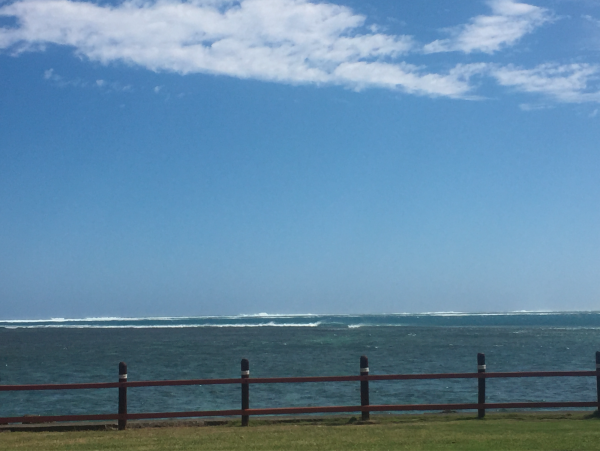, researchers have uncovered significant interactions in sea surface temperature (SST) variations between the Western Australian coast and the western-central tropical Pacific.
Marine heatwaves have happened frequently in tropical Pacific. (Photo taken in Yanuca Island, Cuvu, Fiji by LIN Pengfei)
"Our findings demonstrate a notable shift in climate dynamics, driven by external forces such as greenhouse gases and volcanic activities, which have intensified SST variabilities in these regions since 1985." The corresponding author Prof. LIN Pengfei from the Institute of Atmospheric Physics at the Chinese Academy of Sciences (IAP/CAS) explained why this discovery is important, "Our discovery helps explain the increasing frequency of marine heatwaves and coral bleaching events along the Western Australian coast."
The study utilized multiple observational datasets, pacemaker experiments based on FGOALS-f3-L and CESM1, and large ensemble simulations, building on previous work by the team. This comprehensive approach allowed the researchers to identify a crucial period starting in 1985, during which external forcings began to significantly influence the tropical Indian Ocean, leading to profound decadal climate linkages with the Western Australian coast and the western-central tropical Pacific.
These dynamics reveal that warm SST anomalies in the tropical Indian Ocean drive equatorial easterly wind anomalies, cooling the SST in the western-central tropical Pacific and enhancing the Indonesian Throughflow, which brings warmer water to the Western Australian coast. Additionally, these colder SSTs can induce cyclonic circulation in the Southeast Indian Ocean, amplifying warming effects off the Western Australian coast.
Prof. LIN emphasized the importance of these findings, noting, "Understanding these enhanced decadal linkages is critical for predicting future climate patterns and managing their impacts."
A coauthor of the study, Doctoral candidate DING Yuewen highlighted that the study also points to challenges in modeling these complex interactions, as current climate models often fail to capture accurately the incoherent warming patterns across different tropical ocean basins since the 1980s. This discrepancy underscores the need for improved models to better predict the regional and global impacts of these climate changes.
This collaborative study was conducted by a team of scientists from IAP/CAS, the Department of Atmospheric and Oceanic Sciences (ATOC) at the University of Colorado, the National Center for Atmospheric Research in the USA, and Nanjing University of Information Science and Technology.
The team advocates for advancements in climate modeling moving forward, to better represent the intricate warming patterns and their interactions with internal variabilities like the Interdecadal Pacific Oscillation (IPO) and the Atlantic Multidecadal Oscillation (AMO) using
FGOALS-g3 super-large ensembles. Improved predictions will be essential for managing the impacts of climate changes in a warming world.

